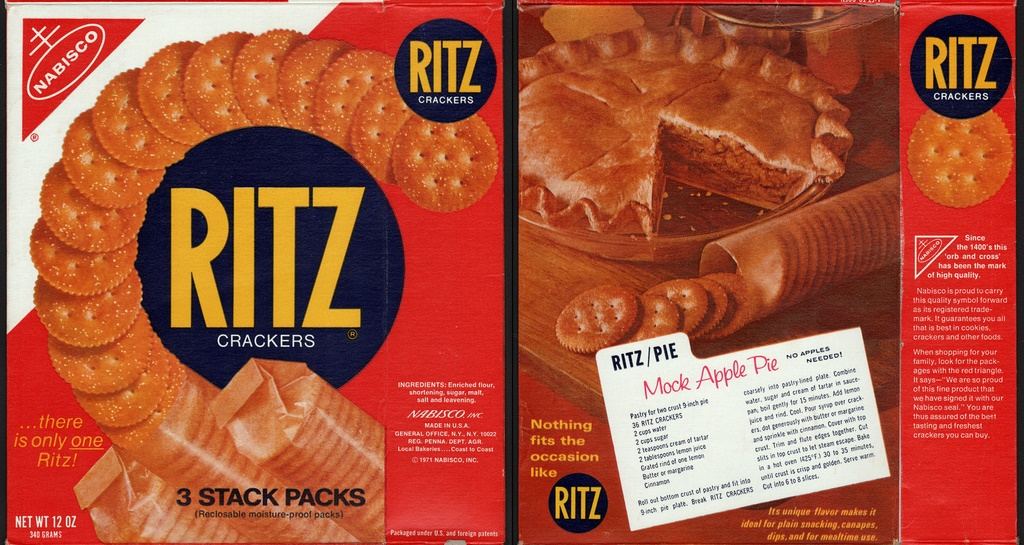Depression Pies
Depression Pies
By Liz Dommasch, Archivist
The Great Depression of the early 1930s was a worldwide social and economic shock. At home, Canadians were severely affected through unemployment, drought, and increased costs which saw the average family struggle to make ends meet. As ingredients became more scare or unaffordable, homemakers developed simplified recipes with alternative ingredients, such as “desperation pies”, “hard time pies” and “mock pies” which used limited ingredients in order to create a somewhat tasty dessert. These recipes saw a resurgence on Social Media during the COVID-19 pandemic and its economic impact, due to their low cost and simplicity, as well as their overall novelty.

One such pie that saw a rise in interest was the Depression Era Pie otherwise known as Water Pie, or its later iteration, Sprite Pie. The genius of Water Pie is its limited ingredients: pie crust, water, flour, sugar, vanilla and butter; that when combined and baked together forms a wobbly, translucent custard. Although this pie may seem like an oddity, it’s a surprisingly close relative to a number of other confections such as buttermilk pie, Shoo-fly pie (made with molasses), Amish cinnamon pie (essentially water pie with added spice), chess pie, Osgood pie, and vinegar pie (which was said to be a favourite of Laura Ingalls Wilder), which were all created using simple inexpensive ingredients.
Osgood pie is something of a naming mystery as some say its origins come from names such as “Oh-so-good-pie” or “Allgood pie”, while others say it relates to the surname “Osgood”. It usually contains raisins and nuts, and some people claim that the pie is simply a chess pie (similar to a pecan pie, but without nuts) with raisins added to it. Popular during the early 1900s up to the 1950s-1960s, it is closely related to chess pie and vinegar pie based on its ingredients:
Osgood Pie
3 egg yolks, 1 ½ cup raisins, 3 tbsp. vinegar, 1 tbsp. butter, 1 ¼ cups brown sugar, 1 tsp. spice, 2 tbsp. flour, 2 cups hot water. Cook raisins, vinegar, butter, sugar, [and] spice in water. Add flour and yolks of eggs. Use whites for top of pie. (Made like a lemon pie)
- Mrs. Jas. Fishbak, Tested Tasty Treats Cookbook compiled by Salford United Church, ca. 1949.

Four young women baking together in a kitchen – November 1946. [COA123 #12.52]
Before refrigeration, homemakers could only cook with ingredients that were in season or were preserved or stored. Vinegar pies evolved in the 19th century as a substitute for lemons, a fruit not native to Canada, in order to balance the sweetness of custard pie filling. From a texture perspective, vinegar pie is much like a chess pie or buttermilk pie, as when it bakes it gets a little bit of a crust on top. The acidity in the vinegar gives the pie a flavor that is sweet and reminiscent of lemon:
Vinegar Pie
1 egg
1 teaspoon (heaping) Five Roses Flour
1 cup sugar
1 ½ tablespoons sharp vinegar
1 cup cold water
Nutmeg to taste
Beat the egg, flour and sugar together. Add the vinegar and cold water. Flavor with nutmeg and bake with two crusts.
- Five Roses Cook Book, Bread Pastry, etc. – 1915.
Whereas, vinegar pie uses vinegar to replace the flavor of lemon, mock pies also substitute ingredients in order to mimic the original recipe. One such recipe is Mock Apple Pie, which uses soggy crackers and flavouring to replicate the apple pie filling. Iterations of this pie were first seen in the 1800s, using a hardtack cracker, however, it gained traction during the Great Depression and grew in popularity during WWII when apples were expensive and in short supply. Starting in the 1940s, Nabisco even printed the recipe for Mock Apple pie on their cracker box, in order to boost sales. Other variations of mock pies, include Mock Cherry Pie, which uses cranberries instead of cherries, and Mock Pumpkin Pie, which uses steamed prunes to create the pie filling.
Mock Apple Pie #1
2 cups hard boiling water
1 – ½ cups sugar
2 tsp. cream of tartar
Place the above in a small pot and bring to a hard boil. Then drop in 22 Ritz crackers. DO NOT STIR. Bring to a boil for 20 minutes. Pour mixture into an unbaked 9” pie crust. Sprinkle with cinnamon and dot with butter, then cover with a top crust. Bake at 425° for ten minutes, then at 325° till crust is a golden brown. It takes about 15-20 minutes. Serve cold.

A box of Ritz crackers featuring a mock apple pie recipe.
